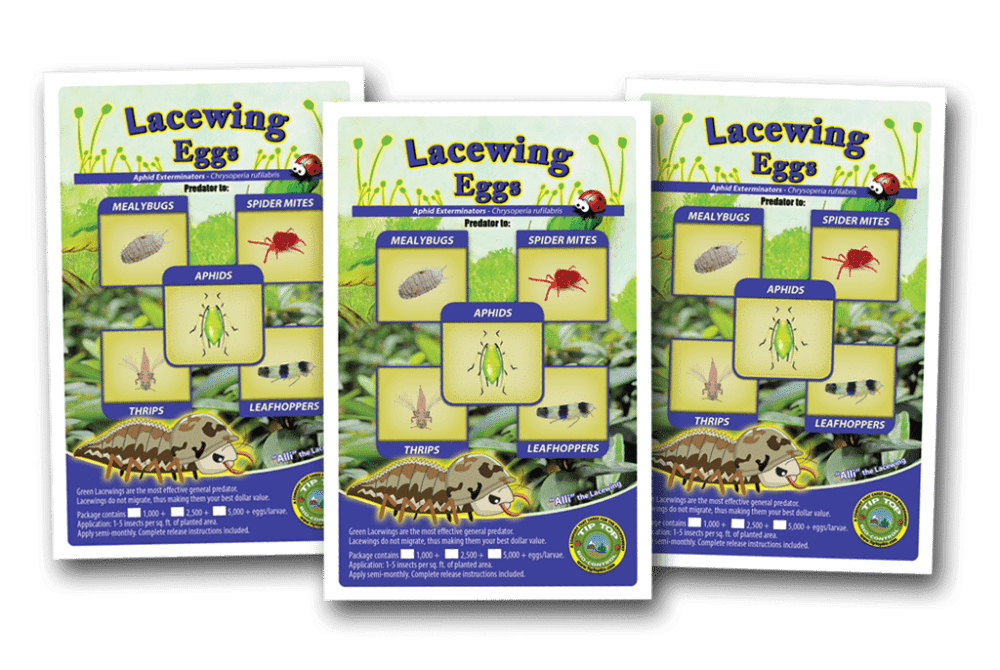Buy live green lacewings online from Green Thumb and they are guaranteed live delivery! (If shipping outside of California, it may take up to 4-6 business days to arrive)
The common green lacewing is widely used in various situations to control many different pests.Many species of adult lacewings do not kill pest insects, they actually subsist on foods such as nectar, pollen and honeydew. The adult lacewing lays her eggs on foliage. Each egg is attached to the top of a hair-like filament. After a few days the eggs hatch and a tiny predatory larva emerges ready to eat the pests.Lacewing larvae are also known as “aphid lions”. They are tiny upon emerging from the egg, but grow to 3/8 of an inch long.
Lacewing larvae voraciously attack their prey by seizing them with large, sucking jaws and inject a paralyzing venom. The hollow jaws then draw out the body fluids of the pest. In general, they attack the eggs and the immature stages of most soft-bodied pests such as: aphids, thrips, spider mites, sweet potato & greenhouse whitefly, mealybugs, leafhoppers, and the eggs and caterpillars of most pest moths. Of all available commercial predators, this lacewing is the most voracious and has the greatest versatility for pests of field crops, orchards, and greenhouses.
LIFESPAN : Each lacewing larva will devour 200 or more pests or pest eggs a week during their two to three week developmental period. After this stage, the larvae pupate by spinning a cocoon with silken thread. Approximately five days later adult lacewings emerge to mate and repeat the life cycle. Depending on climatic conditions, the adult will live about four to six weeks.
RELEASE INSTRUCTIONS: Once you have made it home with your Lacewings, you will determine which release guide to follow based on whether your package contained Lacewing eggs or Lacewing larvae. DO NOT STORE LACEWINGS, they must be used upon receiving your shipment! However, you CAN store Lacewing eggs for up to two weeks in a cool spot for future use but it is recommend to also be used immediately. Next, Gently disperse contents of the Lacewing eggs and rice hulls in fixed pouches. The pouches then should be distributed among your infested plants by stapling or paper clipping them to the leaves and/or placing them in the crotch of the plant.
RELEASE RATES: These rates are for preventative control only, multiple releases and/or higher quantities are necessary for heavier infestations.
| QUANTITY | APPROX. COVERAGE |
| 1,000 | 2,500 sq. ft. |
| 2,500 | 5,000 sq. ft. |
| 5,000 | 1 Acre |
| Weight | .3 lbs |
|---|---|
| Green Lacewing Options | 1,000 Eggs – $29.99, 1,000 Larvae – $41.99 |




